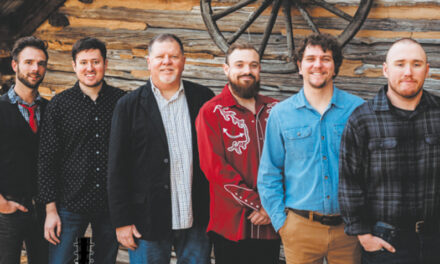September 22, 2018
By W. Gerald Cochran
Hickory, NC
On Saturday, September 22, the Western Piedmont Symphony welcomed back the Tesla Quartet: Ross Snyder and Michelle Lie, violins; Edwin Kaplan, viola; and Seraphim Smigelskiy, cello, for their fourth season in residence and the first concert of their 2018-2019 Chamber Classics Series in the Drendel Auditorium of the Catawba Valley Arts and Science Center. The program consisted of three very different quartets.
Opening the concert was Ludwig van Beethoven’s (1770-1827) String Quartet in F, Op. 18, No. 1. Although labeled as Quartet Number One, it was actually the second that Beethoven wrote (out of 16). Haydn was known as the father of the string quartet, and then Mozart took it to new heights, while Beethoven completely transformed the form. This quartet is in the usual four movements. It is the Adagio second movement that, to me, is the most gripping. It is passionate and pleading and filled with pathos. This performance superbly displayed the intense emotions that the composer had expressed. Of course, in true Beethoven style, the final two movements shed the darkness and went on to light and triumph.
Karol Szymanowski (1882-1937) was a Polish composer and pianist. Of the two string quartets that he wrote, the first, in C, Op. 37, was presented here. In three movements, the first two are along classical lines with impressionistic overtones. It is the third, final, movement that is so striking. In a radical change from the lush second movement, it is a fugue somewhat jokingly imitating the fugue in Beethoven’s Fifth Symphony. What makes it very interesting is that each voice plays the theme in a different key, and midway through the movement, each instrument shifts up one tone for a while, and ultimately then comes back down for the finale. Needless to say, this is not an easy work to perform; the performance tonight was exceptional and showed tremendous virtuosity and passion.
The program closed with the String Quartet in g minor, Op. 10, by Claude Debussy (1862-1918). The only string quartet that Debussy wrote, its major concern is sonority and timbre. With its impressionistic tonal shifts, it sheds the rules of classical harmony and composition of Haydn and Mozart. Tonight’s performance, like the rest of the program, received a virtuosic, thoughtful, and dynamic presentation.
Like the cherry on the top of an ice cream sundae, the audience was treated to an encore with a quartet arrangement of Debussy’s Girl with the Flaxen Hair. Originally written for solo piano, the piece was transcribed for string quartet by Ross Snyder, violinist in the Tesla Quartet. A sweet confection to close a delightful concert.









